Spice up your kitchen with the tantalizing flavors of homemade Indian curry. Whether you’re a seasoned chef or just starting out this easy and delicious recipe will have you creating mouthwatering dishes in no time.
Here we’ll take a journey through the history of curry and explore the essential ingredients and spices needed to make an authentic Indian curry. We’ll guide you step-by-step through the process on how to make homemade indian curry, adding the perfect curry paste, cooking vegetables to perfection, and finishing off with those delightful finishing touches.
We’ll also cover different types of easy Indian curry sauces and provide serving suggestions for your culinary creations. Get ready to impress your friends and family with your newfound curry-making skills.
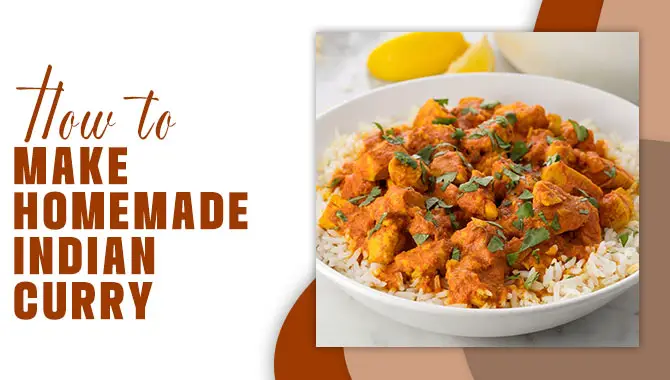
How To Make Homemade Indian Curry In Less Than 20 Minutes
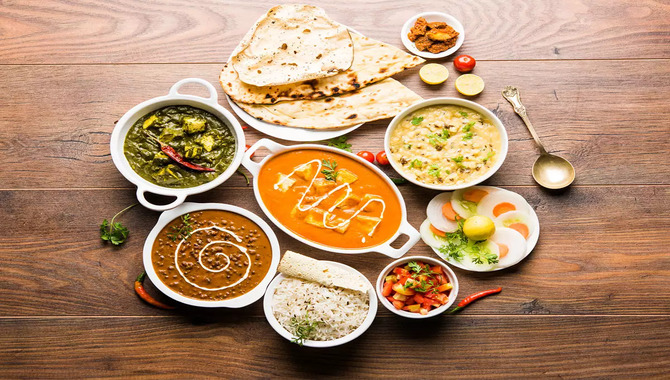
Curry, originally a medicinal spice blend from ancient India, gained popularity in Europe during colonial times. Today, it is an integral part of Indian cuisine with regional variations like North Indian and South Indian curry. Renowned for its rich flavors and aromatic spices like turmeric, cumin, coriander, and ginger, curry offers both taste and health benefits.
Homemade Indian curry allows you to customize flavors and ingredients to match your preferences and unleash your culinary creativity while enjoying authentic flavors. Here are full process on how to make homemade indian curry.
1. Gather Essential Ingredients
To prepare your own flavorful homemade Indian curry, you’ll need to gather a variety of essential ingredients. Begin by collecting a selection of onions, garlic, and ginger. It’s important to finely chop these ingredients to ensure they distribute evenly throughout the curry.
In a pan heated with oil, sauté the onions until they become beautiful golden brown. This step adds depth and richness to your curry’s flavor profile. Once the onions are perfectly cooked, introduce the garlic and ginger, allowing their aromatic qualities to envelop the kitchen. Combining these three ingredients sets the stage for a delicious curry experience.
2. Preparing The Spices
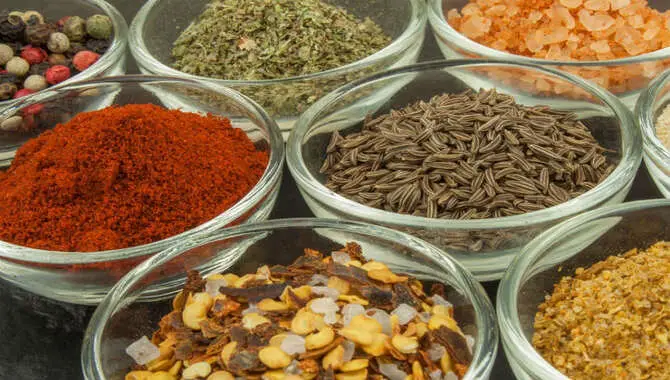
Preparing the spices is a crucial step when making homemade Indian curry. The key to achieving authentic flavors is carefully selecting and preparing the right spices. First, gathering all the necessary spices, such as cumin seeds, coriander seeds, turmeric powder, mustard seeds, and garam masala, is important.
To enhance their flavors, lightly toast the whole spices in a dry pan until fragrant. Then, grind them into a fine powder using a spice grinder or mortar and pestle.
This will release their essential oils and intensify their aroma. Finally, store the freshly ground spices in an airtight container to preserve their potency. By preparing the spices properly, you can elevate your homemade Indian curry to new heights of flavor and authenticity.
3. Sautéing The Onions
When making a homemade Indian curry, sautéing the onions is a crucial step that adds depth and flavor to the dish. Begin by finely chopping the onions and heating oil or ghee in a large pan. Cook the onions over medium heat until they turn translucent and start to caramelize, releasing their natural sweetness and enhancing the taste of the curry.
Don’t be afraid to add flavor by including garlic, ginger, and other desired spices during this process. Remember to stir the onions to avoid burning frequently. Once the onions have been cooked to your desired caramelization level, add other ingredients, such as tomatoes, vegetables, and spices, to complete your homemade Indian curry recipe.
4. Adding The Curry Paste
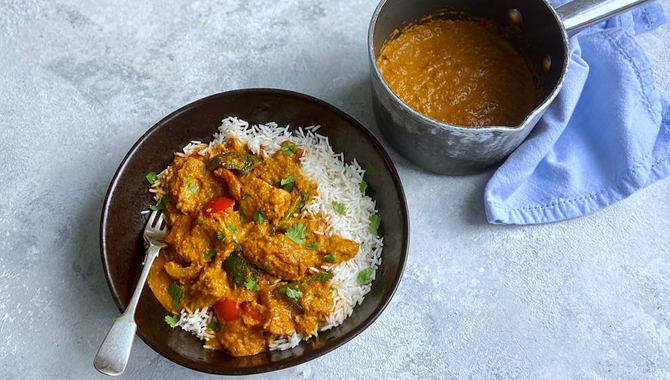
In the process of making your homemade Indian curry, one key step is incorporating the curry paste. This paste, consisting of a blend of spices, herbs, and aromatics, adds depth and complexity to your dish. Made with ingredients like ginger, garlic, onion, turmeric, cumin, coriander, and chili peppers, the curry paste brings flavor to your curry.
To prepare the curry paste, simply combine all the necessary ingredients in a food processor. Or Blender and blend until you achieve a smooth consistency. It’s important to adjust the amount of curry paste based on your personal taste preferences and desired level of spiciness. Start with a smaller quantity and gradually add more if needed to achieve your desired flavor profile.
5. Cooking The Vegetables
For a delicious homemade Indian curry, cooking vegetables is a crucial step. Begin by sautéing the onions and garlic in a large pot until they turn soft and translucent, creating a flavorful base. Next, add vegetables such as potatoes, carrots, bell peppers, and peas to the pot.
These veggies contribute texture and vibrant colors to your curry. Stir in your preferred curry powder or spices like turmeric, cumin, and coriander. And garam masala to infuse the dish with authentic Indian flavors.
Cook the vegetables over medium heat until they reach the desired tenderness, maintaining a slight crunch. You can incorporate tomatoes or coconut milk into the mix to enhance the richness, creating a luscious and creamy curry sauce. Don’t forget to season with salt and pepper according to your taste preferences.
6. Adding Liquid And Simmering
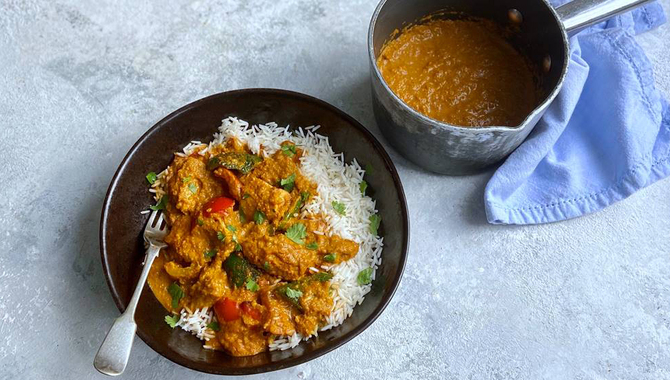
Adding liquid and simmering are essential cooking techniques that enhance a dish’s flavor and texture. When adding liquid, whether stock, broth, or water, it is important to do so gradually to ensure that the flavors meld harmoniously.
This allows the liquid to be absorbed by the ingredients, resulting in a more flavorful final product. Simmering is a gentle cooking method with keeping the heat low and steady, allowing the ingredients to cook slowly and evenly.
This technique is commonly used for soups, stews, and sauces, as it helps to develop complex flavors and tenderize tougher cuts of meat. By mastering these techniques, home cooks can elevate their culinary skills and create delicious meals that are bursting with flavor.
7. Finishing Touches
Finishing touches are the key to elevating your homemade Indian curry from good to extraordinary. One of the most important steps is tempering your spices in hot oil or ghee at the end of cooking. This process, known as tadka, helps release the full flavor and aroma of the spices, adding depth and complexity to your curry.
Another essential finishing touch is garnishing with fresh herbs such as cilantro or mint, which adds a pop of color and a refreshing element to the dish. Finally, don’t forget to squeeze some lemon or lime juice over your curry just before serving.
This will provide a tangy brightness that balances out the richness of the flavors. With these simple yet impactful finishing touches, you can take your homemade Indian curry to new heights and impress your family and friends with your culinary skills.
Storage Homemade Indian Curry
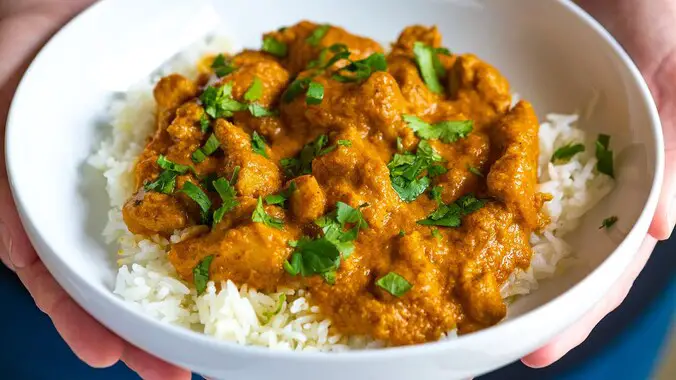
When storing your homemade Indian curry, it’s important to follow a few key tips to maintain its flavor and freshness. Properly store the curry using airtight containers or freezer-safe bags; don’t forget to label and date them for easy identification later on.
You can store the curry in the refrigerator for up to 3-4 days or in the freezer for longer periods of time. If you freeze the curry, remember to thaw it in the refrigerator overnight before reheating. When it’s time to warm it up, you can use the stove or microwave, stirring occasionally for even heating.
Serving Suggestions For Your Curry Dish
These serving suggestions are not set in stone; you can always experiment and adapt them to suit your preferences. Enjoy your homemade Indian curry with these accompaniments, and savor the wonderful flavors of Indian cuisine. Looking for some delicious ways to serve your homemade Indian curry? Here are some serving suggestions that will complement your flavorful curry dish.
- Classic Combination: Pair your curry with steamed rice for a traditional and satisfying meal. The fluffy basmati rice is the perfect companion, absorbing the rich flavors of the curry as you indulge in every bite.
- Bread on the Side: Add some naan bread or roti to your meal. These soft and pillowy bread options are ideal for scooping up the flavorful gravy and savoring the taste of the spices. Whether it’s garlic naan or plain roti, the bread will elevate your curry experience.
- Fresh Garnish: Sprinkle some fresh cilantro, chopped green onions, or even curry leaves on top of your curry for freshness and added visual appeal. These vibrant green herbs enhance your dish’s presentation and provide a refreshing and fragrant element.
- Cooling Yogurt: Serve your curry with yogurt or raita to cool down the spice. The tangy and creamy yogurt is a calming agent, balancing out the flavors and giving your taste buds a refreshing respite.
- Tangy Accompaniments: Don’t forget to have chutneys, pickles, or relishes on hand for that extra tanginess and variety. Whether a sweet mango chutney or a spicy lime pickle, these condiments add a delightful flavor to your curry.
- Crunchy Elements: Consider serving your curry with papadums or crispy fried snacks for a satisfying crunch. These savory delights provide a delightful contrast in texture and can be enjoyed alongside your curry.
Conclusion
making homemade Indian curry is a fulfilling activity and a delightful culinary experience. By carefully following these easy steps, you can create a curry bursting with flavors that will undoubtedly leave an impression on your loved ones.
Feel free to experiment with various spices and ingredients to add your own personal touch to the dish. Whether you prefer a fiery and spicy curry or a milder version, homemade Indian curry will tantalize your taste buds and satisfy your cravings.
So put on your apron, gather the necessary ingredients, and embark on a flavorful journey in your kitchen. Hope the above outline on how to make homemade indian curry, will be very helpful in enhancing your cooking knowledge.
Frequently Asked Questions

I’m a writer and blogger who loves to talk about entertainment, culture, and relationships. I love to share my thoughts and insights on these topics, and I’m always looking for new ways to engage with my readers. I’m also a big fan of learning new things, so I’m always exploring new areas of interest.
